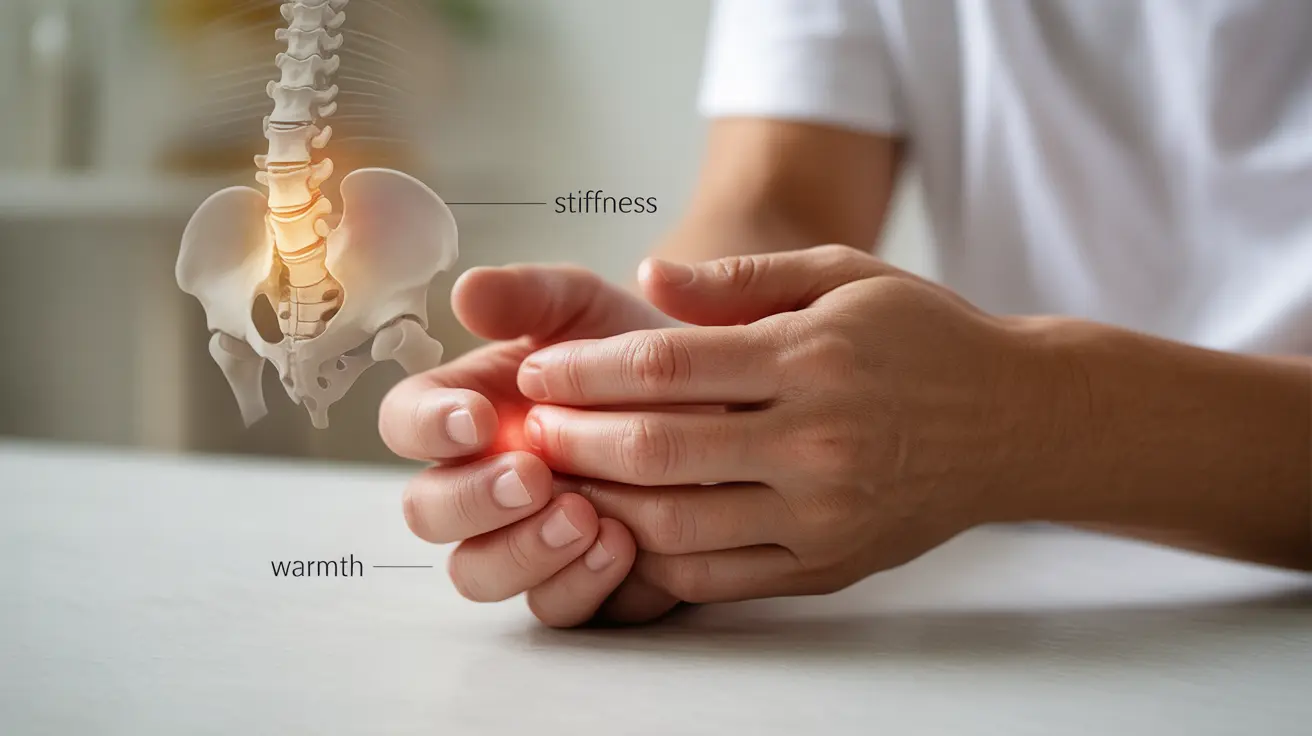Ankylosing spondylitis (AS) is typically known as a condition affecting the spine, but many people experience early symptoms in their peripheral joints, including their hands. Understanding how this inflammatory condition can affect the hands is crucial for early diagnosis and proper management.
While the spine remains the primary focus in AS, recognizing hand involvement early can lead to better treatment outcomes and improved quality of life. This comprehensive guide explores the connection between early ankylosing spondylitis and hand symptoms.
Understanding Hand Involvement in Early Ankylosing Spondylitis
Early ankylosing spondylitis can manifest differently in various joints, and hand involvement is more common than previously thought. The condition can affect multiple joints in the hands, including finger joints and wrists, leading to various symptoms and challenges in daily activities.
Common Hand Symptoms
When AS affects the hands, patients typically experience:
- Morning stiffness lasting 30 minutes or longer
- Swelling in finger joints
- Reduced grip strength
- Pain that improves with movement
- Warmth and tenderness in affected joints
Distinguishing AS Hand Symptoms from Other Conditions
It's essential to differentiate AS-related hand symptoms from other inflammatory conditions like rheumatoid arthritis. In AS, hand involvement often occurs alongside other characteristic symptoms, such as lower back pain and stiffness, though some patients may experience peripheral symptoms first.
Key Diagnostic Indicators
Healthcare providers look for several factors when evaluating hand symptoms:
- Pattern of joint involvement
- Presence of other AS symptoms
- Family history
- Response to exercise and movement
- Blood test results for inflammatory markers
Treatment Approaches for Hand Symptoms
Managing early ankylosing spondylitis symptoms in the hands requires a comprehensive approach that may include:
Medical Interventions
Treatment options typically include:
- NSAIDs for pain and inflammation
- Disease-modifying antirheumatic drugs (DMARDs)
- Targeted biological therapies
- Local steroid injections when necessary
Physical Therapy and Exercise
Regular exercise and physical therapy play crucial roles in maintaining hand function:
- Range-of-motion exercises
- Grip-strengthening activities
- Hand stretches
- Joint protection techniques
Lifestyle Modifications and Self-Management
Several lifestyle changes can help manage hand symptoms effectively:
- Using ergonomic tools and equipment
- Applying heat or cold therapy
- Practicing stress management
- Maintaining proper posture during daily activities
- Regular exercise routines
Frequently Asked Questions
What are the early symptoms of ankylosing spondylitis, especially related to pain and stiffness in the hands?
Early hand symptoms of AS typically include morning stiffness lasting more than 30 minutes, swelling in finger joints, reduced grip strength, and pain that improves with movement. These symptoms may be accompanied by warmth and tenderness in the affected joints.
How can I tell if ankylosing spondylitis is causing swelling or pain in my finger joints?
AS-related hand symptoms often occur alongside other symptoms like back pain and stiffness. The swelling typically affects multiple fingers, improves with movement, and is worse in the morning. A rheumatologist can help determine if these symptoms are related to AS through physical examination, imaging, and blood tests.
What treatments help reduce joint pain and stiffness in the hands for people with early ankylosing spondylitis?
Treatment options include NSAIDs, DMARDs, biological therapies, and local steroid injections. Physical therapy, hand exercises, and proper joint protection techniques are also essential components of managing hand symptoms.
Can ankylosing spondylitis affect peripheral joints like the hands before it affects the spine?
Yes, while AS typically affects the spine first, some patients may experience peripheral joint symptoms, including hand involvement, before or simultaneously with spinal symptoms. This pattern is more common in certain subgroups of AS patients.
What lifestyle changes or exercises can help manage early ankylosing spondylitis symptoms in the hands and other joints?
Key lifestyle modifications include regular hand exercises, using ergonomic tools, applying heat or cold therapy, maintaining good posture, and practicing stress management techniques. Regular physical activity, including specific hand exercises and stretches, can help maintain joint flexibility and function.




